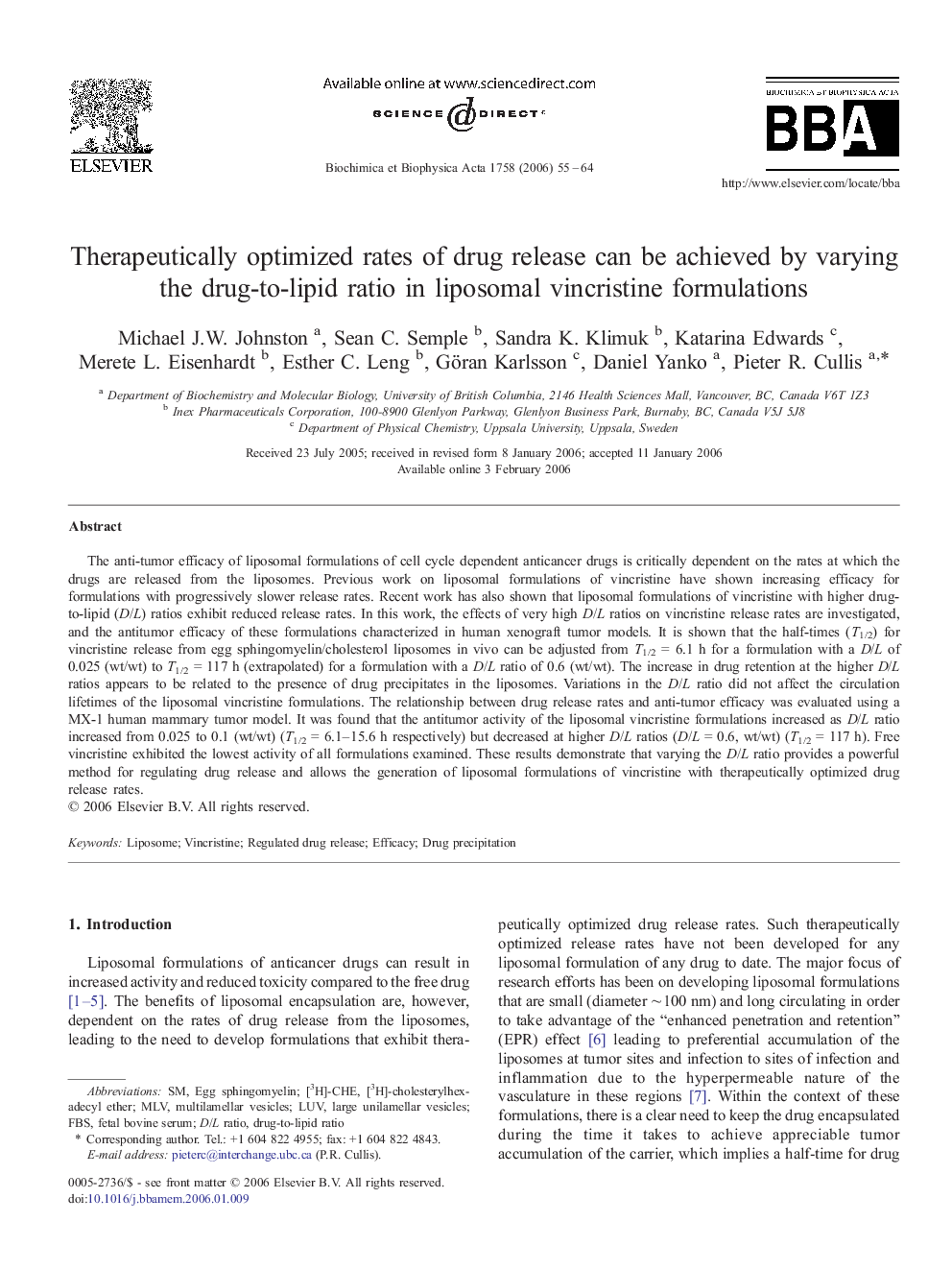| Article ID | Journal | Published Year | Pages | File Type |
|---|---|---|---|---|
| 1946199 | Biochimica et Biophysica Acta (BBA) - Biomembranes | 2006 | 10 Pages |
The anti-tumor efficacy of liposomal formulations of cell cycle dependent anticancer drugs is critically dependent on the rates at which the drugs are released from the liposomes. Previous work on liposomal formulations of vincristine have shown increasing efficacy for formulations with progressively slower release rates. Recent work has also shown that liposomal formulations of vincristine with higher drug-to-lipid (D/L) ratios exhibit reduced release rates. In this work, the effects of very high D/L ratios on vincristine release rates are investigated, and the antitumor efficacy of these formulations characterized in human xenograft tumor models. It is shown that the half-times (T1/2) for vincristine release from egg sphingomyelin/cholesterol liposomes in vivo can be adjusted from T1/2 = 6.1 h for a formulation with a D/L of 0.025 (wt/wt) to T1/2 = 117 h (extrapolated) for a formulation with a D/L ratio of 0.6 (wt/wt). The increase in drug retention at the higher D/L ratios appears to be related to the presence of drug precipitates in the liposomes. Variations in the D/L ratio did not affect the circulation lifetimes of the liposomal vincristine formulations. The relationship between drug release rates and anti-tumor efficacy was evaluated using a MX-1 human mammary tumor model. It was found that the antitumor activity of the liposomal vincristine formulations increased as D/L ratio increased from 0.025 to 0.1 (wt/wt) (T1/2 = 6.1–15.6 h respectively) but decreased at higher D/L ratios (D/L = 0.6, wt/wt) (T1/2 = 117 h). Free vincristine exhibited the lowest activity of all formulations examined. These results demonstrate that varying the D/L ratio provides a powerful method for regulating drug release and allows the generation of liposomal formulations of vincristine with therapeutically optimized drug release rates.
